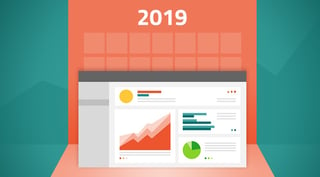
The fourth quarter of the fiscal year is half over and that means budget planning is well underway. No, not the most exciting thing to do in the remaining months of 2018, but necessary nonetheless.
There are a lot of factors that go into a bank’s budget, but one thing that’s important not to overlook is your technology investment. And, this starts with a robust CRM platform.
With the right CRM in place, you’ll be equipped to launch strategic sales, service and marketing initiatives that benefit your business and attract the right customers in 2019. Consider the following reasons for including a CRM in next year’s budget.
Where’s the Value in a CRM?
A CRM can be the cornerstone of your sales and service arsenal. When you have a consolidated source of customer data, you can then take this data and apply it to marketing campaigns and overall business strategies. By implementing a robust CRM, you’ll be able to:
1. Prioritize personalization
As the financial industry has transitioned from mass marketing to a more targeted, personalized approach, banks and credit unions need the right customer data to implement personalization into their strategies. This can be accomplished by segmenting customers according to more than just transaction data, exploring factors like digital propensity, financial goals, and price sensitivity. This segmentation and analysis from your CRM gives you a better understanding of who your customers are and what they need. You can then target your interactions with them accordingly.
2. Power digital marketing campaigns
As digital continues to be the way of the marketing world, and banks and credit unions slowly begin to adopt tactics like email, social media, and video, they need the right tools to successfully execute campaigns. They require insights that can be used to strategically up-sell, cross-sell, and nurture clients across all mediums. Not only does a CRM platform enable this through analytics features, but it also includes marketing automation functionality that can put campaigns into action.
3. Put the customer first
As the Forrester annual customer experience rankings found the banking industry’s CX efforts to be “stagnant,” there is an ongoing push for financial institutions to take more of a customer-first approach across their businesses. A CRM helps a bank keep up with customer expectations by making it easier to track customer interactions with various services and respond appropriately. For example, if a customer regularly downloads resources on home mortgage loans, these actions populate in the CRM so the sales team can share follow-up information with the customer on mortgage services and offerings. Having this strong pulse on customer activity goes a long way in creating better overall customer experiences.
4. Pursue data-driven decisions
Data is becoming more and more valuable for all parts of a financial business, as it guides strategies and propels leadership to take specific actions. There’s a real need for financial marketers to be able to manage data on a corporate and local level so it is useful for other departments. A CRM supports this need; when you have the right data available, you can analyze it, and then use the analysis to make data-driven decisions.
Build Your Sales and Service Foundation with 360 View
By including a CRM in your bank or credit union’s 2019 budget, you’ll be better positioned to act on the initiatives and goals you set for your organization over the year. 360 View wants to help you build the necessary foundation for taking these actions. Our growth platform offers robust capabilities that you can take advantage of as you create more data-driven, personalized customer experiences.
We want to help you get started on the right foot in 2019. Download our latest white paper about some of the lesser-known benefits of CRM that you can't afford to be without.
